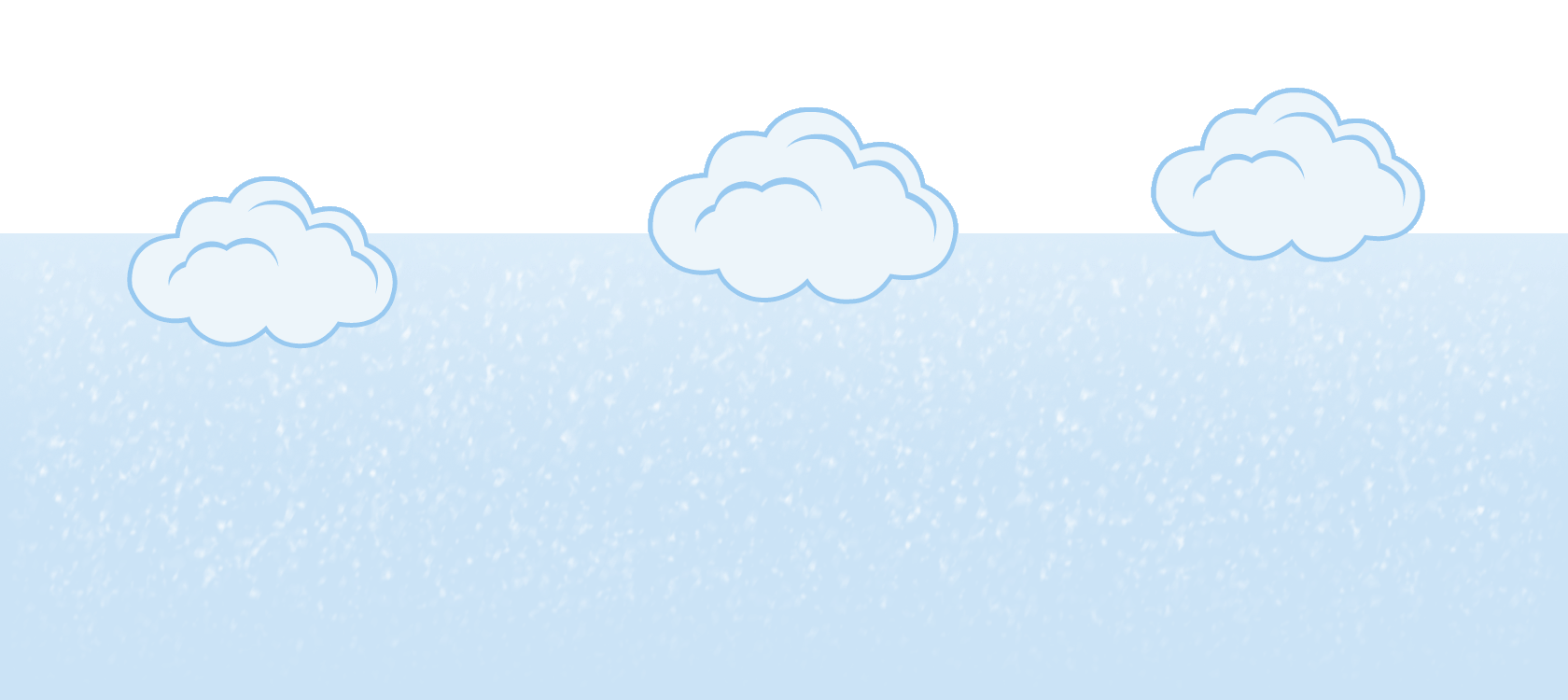In this informational text, elementary students learn about the difference between weather and climate and the various components of Earth’s climate system, including the Sun, atmosphere, land, and oceans. The text can be used in conjunction with the lessons featured in the article Setting the Stage for Understanding the Climate System’s Complex Interactions. The text can also be used to practice the reading comprehension strategy of visualizing. Learn more about visualizing in the articles Visualizing Informational Text and Lessons about Visualizing with Informational Text.
Versions of this text are available at the K-2 and 3-5 grade bands. The Flesch-Kincaid reading level of each version is provided following the text. Each version is available as a text document, a full-color illustrated book (downloadable PDF documents) that you can print, copy, and use with your students, and an electronic version with recorded audio narration. The two reading levels can help you differentiate instruction for your students. You can use these various versions and formats as you differentiate instruction for your students.
GRADES K-2
All About Earth’s Climate

Storm clouds and bands of rain. Illuminated by lightning within a night-time thunderstorm. Image courtesy of NOAA Photo Library.
by Jessica Fries-Gaither
Look out the window. Is it sunny? Or maybe it’s raining. This is called the weather. Weather is what Earth’s air is like at a certain time and place.
Weather can be different. The weather might be different far away from you.
Weather can change. One day it might be warm and sunny. The next day, it might be cooler and rainy.
Weather is not the same as climate. Weather tells us what is happening right now. Climate tells us what a place is like over a long time.
Pretend you are going on a trip. Climate can help you know what to pack in your suitcase. Weather helps you know what to wear when you get there.
What is Climate?
Earth’s climate is complicated. You need to know about the Sun to understand climate. You also need to know about Earth’s air, land, and water.
The Sun’s light shines on Earth. The energy from the light makes Earth warm.
Gases in the air trap some of the energy. Land traps some, too. So do the oceans. The energy makes the air, land, and water warm.
Some parts of the Earth get warmer than others. Places with snow and ice don’t get very warm. Places with forests or dark soil get warmer. The oceans also get warm.
This energy makes wind. It makes our weather. It helps water and air move around the world. It makes our Earth just right for us!
Flesch-Kincaid Reading Level = 1.9
Access this Grades K-2 text as a text-only document.
Access this Grades K-2 text as a full-color illustrated book
Access this Grades K-2 text as an electronic book.
Notes for assembling the illustrated books:
You can put this book together a couple of different ways. You can print out the pages, cut them in half and then order the pages back to front. Fold the stack in half and then staple the spine of the book. Pairs of pages can then be stapled or glued along the right edge.
You can also assemble the book as a foldable book.
To assemble the books this way, print the four pages and align the document pages so that the following book page numbers are in the lower right-hand corner: front page, page 6, page 2, and page 4. (The cover page should be on top and page 4 on the bottom.) Set your copier to copy single pages into double pages and run the four document pages in the order specified. Cut along the dotted line in the center of the double-sided page, place the book pages in order, fold, and staple along the spine.
GRADES 3-5
All About Earth’s Climate
by Jessica Fries-Gaither
Look out the window. Is it sunny? Or maybe it’s raining or snowing. What you’re noticing is the weather. Weather is what the atmosphere is like at a certain time and place.
Weather changes from place to place. Someone who lives far away from you might have different weather.
Weather also changes often. One day it might be warm and sunny. The next day, it might be cooler and rainy.
Scientists don’t just talk about weather. They also talk about something called climate. Climate is the average of the weather conditions through all seasons over a period of time. So weather tells us what the atmosphere is like over a short period of time, and climate tells us what is like over long periods of time.
Let’s imagine that you are going on a trip to a place you’ve never been before. When you’re packing your suitcase, knowing about the climate can help you decide what types of clothes to bring. If you’re traveling to a place with a warm climate, you might pack shorts and t-shirts. But if you were traveling to a place with a cold climate, you’d probably pack long pants and a jacket instead. Once you arrive at your destination, the weather will help you decide what to wear each day.
Understanding Earth’s Climate
Earth’s climate is complicated. The Sun and Earth’s air, land, and water all interact to create Earth’s climate.
Earth’s climate begins with the Sun. The Sun’s light shines on Earth. Light is a form of energy. That energy makes our air, water, and land warm.
Gases in the air (like carbon dioxide) trap some of the Sun’s energy. These gases are called greenhouse gases. Greenhouse gases make Earth’s atmosphere warm. They make life on Earth possible. Without them, it would be too cold to survive.
Some of the Sun’s energy reaches Earth’s land and water. All the different parts of Earth are warmed by the Sun’s light, but some parts get warmer than others. It depends on how well something absorbs energy. Ice, like the ice sheets found at the North and South Poles, don’t absorb a lot of energy. Earth’s land absorbs some energy, depending on the color of the soil and if it’s covered by trees or buildings. Water can absorb a lot of energy. It takes water a while to warm up, but then it holds onto its heat energy for a while.
The oceans are a good example. The enormous oceans absorb a lot of the Sun’s energy. The warm water is moved around the world by ocean currents.
Warming air also creates air currents. Currents in the atmosphere move masses of air all over the Earth. And of course, moving air and water affects the weather, too.
So when you think of weather or climate, remember that there’s a lot more to it than just looking out the window.
Glossary
climate – the average of the weather conditions through all the seasons over a period of time
greenhouse gas – the name given to a gas that traps the heat of the Sun in Earth’s atmosphere
interact – to act together; to have an effect on each other
weather – what it is like outdoors at a certain time
Flesch-Kincaid Reading Level = 4.8
Access this Grades 3-5 text as a text-only document.
Access this Grades 3-5 text as a full-color illustrated book
Access this Grades 3-5 text as an electronic book.
Notes for assembling the illustrated books:
You can put this book together a couple of different ways. You can print out the pages, cut them in half and then order the pages back to front. Fold the stack in half and then staple the spine of the book. Pairs of pages can then be stapled or glued along the right edge.
You can also assemble the book as a foldable book.
To assemble the books this way, print the four pages and align the document pages so that the following book page numbers are in the lower right-hand corner: front page, page 6, page 2, and page 4. (The cover page should be on top and page 4 on the bottom.) Set your copier to copy single pages into double pages and run the four document pages in the order specified. Cut along the dotted line in the center of the double-sided page, place the book pages in order, fold, and staple along the spine.
This article was written by Jessica Fries-Gaither. Jessica is an education resource specialist at The Ohio State University and project director of Beyond Penguins and Polar Bears. She has taught in elementary and middle school settings. Email Jessica at beyondweather@msteacher.org.
Copyright March 2011 – The Ohio State University. This material is based upon work supported by the National Science Foundation under Grant No. 1034922. Any opinions, findings, and conclusions or recommendations expressed in this material are those of the author(s) and do not necessarily reflect the views of the National Science Foundation. This work is licensed under an Attribution-ShareAlike 3.0 Unported Creative Commons license.



